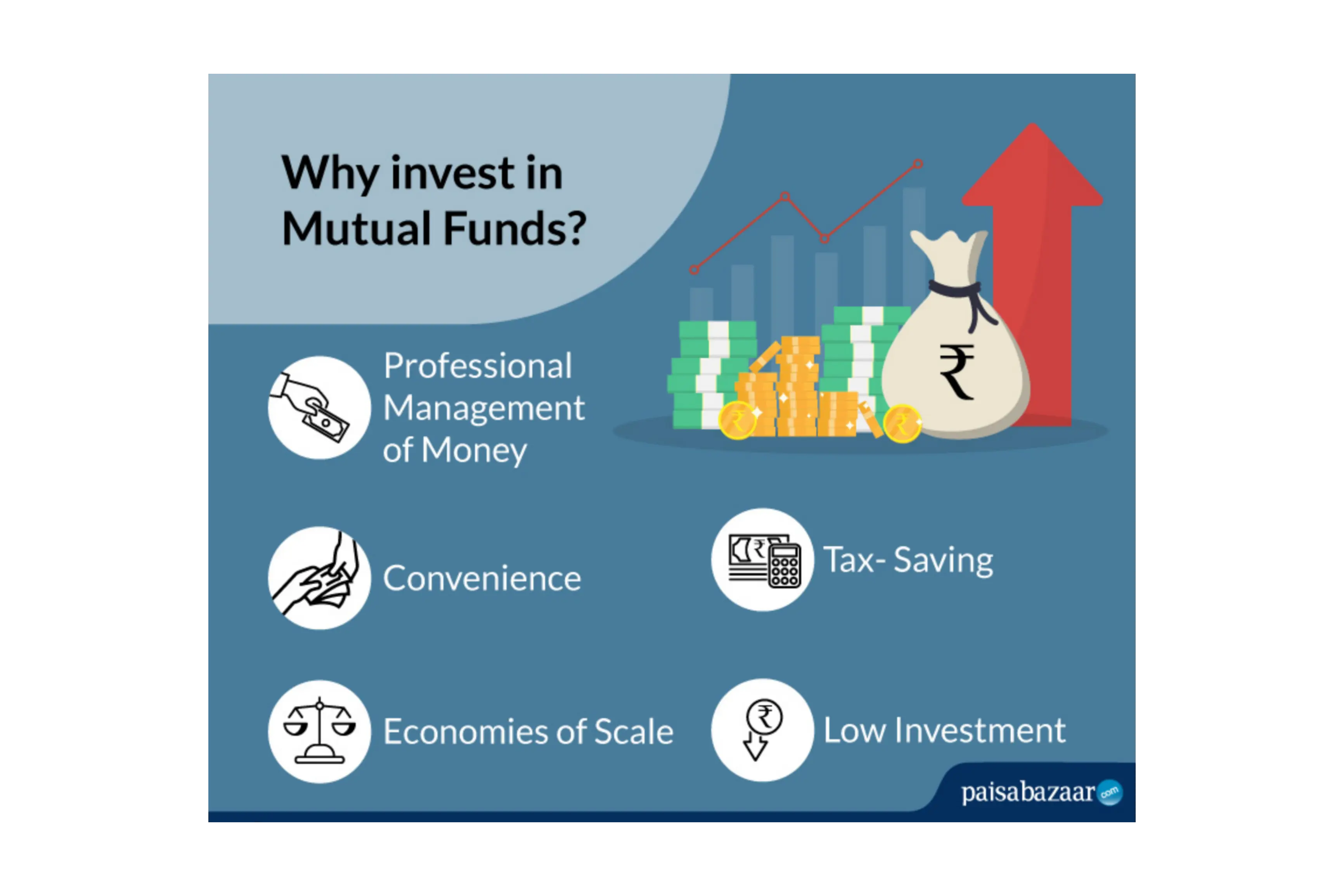A mutual fund is a type of investment vehicle that pools money from multiple investors to buy a diversified portfolio of stocks, bonds, or other securities. The value of a mutual fund's holdings is divided by the number of shares outstanding to determine the net asset value (NAV) per share, which is used to calculate the fund's returns. Mutual funds are managed by professional money managers and are often categorized by their investment objectives, such as growth, income, or index funds. Mutual funds can be bought and sold on a daily basis, and they offer investors a convenient way to diversify their portfolios and gain exposure to a variety of securities.
Select Topic (toc)
Pricing of Mutual Funds
The pricing of mutual funds is determined by their net asset value (NAV). The NAV of a mutual fund is calculated by taking the total value of all the assets in the fund (including cash, stocks, bonds, and other securities) and subtracting any liabilities. The result is then divided by the number of shares outstanding to give the NAV per share. This value is typically calculated each business day after the market closes. Most mutual funds are sold at their NAV, so an investor would pay the same NAV per share whether they are buying or selling shares of the fund. However, some mutual funds may have a sales charge or load, which would affect the price at which an investor can purchase or sell shares.Calculating Mutual Fund Returns
There are several ways to calculate the returns of a mutual fund, but the most common method is to use the total return approach. This method takes into account both the changes in the net asset value (NAV) of the fund and any dividends or capital gains paid out to shareholders.To calculate total return, you would need the following information:
The NAV of the fund at the start of the period you're interested in (NAV1)
The NAV of the fund at the end of the period you're interested in (NAV2)
Any dividends or capital gains paid out during the period
Then you would calculate the return as follows:
- (NAV2 + dividends and capital gains) / NAV1 - 1
- This will give you the total return of the mutual fund as a decimal. To convert it to a percentage, you would multiply it by 100.
- For example, if a mutual fund had an NAV of $10 at the start of a year and an NAV of $11 at the end of the year, and paid out $0.50 in dividends during the year, the total return would be (11 + 0.50) / 10 - 1 = 0.15 or 15%.
It is important to note that the NAV changes every day and the dividends are not guaranteed, this is just an example, and actual results may vary.
Types of Mutual Funds
There are several types of mutual funds, including:
- Equity funds: These invest primarily in stocks and are further divided into subcategories such as large-cap, mid-cap, and small-cap funds.
- Bond funds: These invest primarily in bonds and are further divided into subcategories such as government, corporate, and municipal bond funds.
- Balanced funds: These invest in a combination of stocks and bonds and are designed to provide a balance of growth and income.
- Money market funds: These invest in short-term debt instruments and are designed to provide a high level of liquidity and preservation of capital.
- Index funds: These track a specific market index, such as the S&P 500, and are designed to provide a return similar to the index they track.
- International/Global funds: These invest in foreign markets and currencies, providing diversification and increased opportunities for growth.
- Sector funds: These invest in specific sectors of the economy, such as technology or healthcare.
- Target-date funds: These are designed for investors nearing retirement, and the investment mix becomes increasingly conservative as the target date approaches.
ETFs: Investment Funds Trading
ETFs are investment funds that trade on stock exchanges, like stocks. They typically track an index, such as the S&P 500, or a basket of assets, such as a group of bonds. This means that the value of an ETF is linked to the performance of the underlying assets it holds. ETFs can be bought and sold throughout the trading day like individual stocks, using a brokerage account. They can also be traded using the same strategies as stocks, such as buying and holding, or using technical analysis to make short-term trades. ETFs offer investors a convenient way to gain exposure to a diversified portfolio of assets in a single trade and can be used to help build a diversified portfolio or as a tactical tool for trading.Mutual Fund Fees
Mutual funds charge fees to cover expenses associated with managing and administering the fund. These fees can include management fees, which are charged to cover the cost of hiring portfolio managers and researching investments, and expense ratios, which cover the day-to-day operating expenses of the fund. Some mutual funds also charge sales loads, which are fees paid to financial advisers or brokers when buying or selling shares of the fund. Additionally, some funds may charge redemption fees for selling shares within a certain period of time after purchase. It's important to review the fees associated with a mutual fund before investing in it to make sure that the costs align with your investment goals.
Classes of Mutual Fund Shares
Mutual funds offer different classes of shares, each with its own set of characteristics and fees. The most common classes of shares are:- Class A: These shares typically have a front-end sales charge, also known as a load. This means that a portion of the investment is used to pay the salesperson or financial advisor who sold the shares. Class A shares may also have lower annual expenses than other classes of shares.
- Class B: These shares typically have a back-end sales charge, also known as a deferred load. This means that the sales charge is applied when the shares are sold, rather than when they are bought. Class B shares may also have higher annual expenses than Class A shares.
- Class C: These shares typically have no sales charge, but they may have higher annual expenses than Class A or Class B shares.
- Class D: This class of shares have no load and have the lowest annual expense ratio among all the classes of shares.
- Class I: This class of shares is also known as Institutional shares, and they are only available to large institutional investors such as pension funds and endowments. These shares may have lower annual expenses than other classes of shares.
It is important to note that these class of shares and their characteristics vary across different funds and investors should read the fund's prospectus and consult with a financial advisor before making a decision.
Pros of Mutual Fund Investing
Some of the benefits of investing in mutual funds include diversification, professional management, liquidity, and affordability.- Diversification: Mutual funds allow investors to spread their money across a variety of stocks, bonds, or other securities, reducing the risk of investing in any one particular stock or bond.
- Professional Management: Mutual funds are managed by experienced professionals who have the expertise and resources to research and select investments, monitor performance, and make adjustments as needed.
- Liquidity: Mutual funds are traded on an exchange and can be bought or sold on any business day.
- Affordability: Mutual funds have low investment minimums, which makes them accessible to a wide range of investors.
Additionally, mutual funds are also convenient way to invest as they are easy to buy, sell, and manage and also provide regular income through dividends and capital appreciation.
Cons of Mutual Fund Investing
There are several potential drawbacks to investing in mutual funds, including:- Management fees: Mutual funds charge management fees to cover the costs of running the fund, which can eat into returns over time.
- Expense ratios: Mutual funds also charge expense ratios, which are the annual fees that funds charge as a percentage of assets under management.
- Risk of underperformance: Mutual funds are managed by professional portfolio managers, but they may still underperform the market or a specific index.
- Timing risk: Mutual funds are valued at the end of the trading day, so an investor who buys or sells shares during the day may receive a different price than the net asset value (NAV) that is calculated at the end of the day.
- Lack of control: Investing in a mutual fund means that the investor is entrusting their money to a professional portfolio manager, and they have less control over the specific investments that are made.
- Capital gain distributions: Mutual funds may distribute capital gains to shareholders, which can be a tax liability for the investor.
- Limited to market conditions: The performance of a mutual fund is dependent on the overall performance of the market, so during a bear market, the value of the mutual fund may decrease.
Example of a Mutual Fund
One example of a mutual fund is the Vanguard 500 Index Fund, which aims to track the performance of the S&P 500 Index by investing in the stocks of the 500 largest publicly traded companies in the U.S. This mutual fund is considered a passively managed index fund, as it seeks to replicate the performance of the index rather than trying to beat it through active stock picking. The fund's ticker symbol is VFIAX and it is available for purchase through Vanguard.Mutual Fund FAQs
What is a mutual fund?A mutual fund is a type of investment vehicle that pools money from multiple investors to purchase a diversified portfolio of stocks, bonds, or other securities.
How do mutual funds work?
An investment company manages a mutual fund, and uses the pooled money to buy a diversified group of stocks, bonds or other securities. The fund's returns are then distributed among the investors in the fund in proportion to the number of shares they own.
What are the benefits of investing in a mutual fund?
Mutual funds offer diversification, professional management, and liquidity. They allow small investors to gain exposure to a diversified portfolio of stocks, bonds or other securities, and also allow investors to buy and sell shares at any time.
How do I choose a mutual fund?
When choosing a mutual fund, investors should consider the fund's investment objectives, fees, and past performance. It is also important to consider how the fund fits into your overall investment strategy and risk tolerance.
What are the risks of investing in a mutual fund?
All investments carry some level of risk, and mutual funds are no exception. Some of the main risks associated with mutual funds include market risk, interest rate risk, and credit risk. It is important to understand these risks and consider them when selecting a mutual fund.
How can I buy or sell mutual fund shares?
You can buy or sell mutual fund shares through a broker or financial advisor, or directly through the mutual fund company. Some mutual funds also offer automatic investment plans, which allow investors to automatically purchase shares on a regular basis.











.webp)
